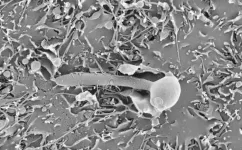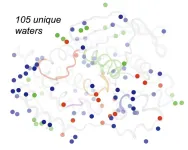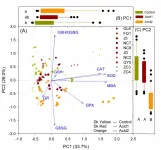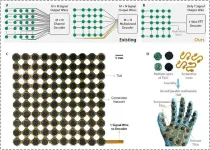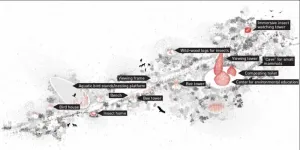(Press-News.org) Barcelona, 12 January 2024 – Global fungal infections, which affect one billion people and cause 1.5 million deaths each year, are on the rise due to the increasing number of medical treatments that heighten vulnerability. Patients undergoing chemotherapy or immunosuppressive treatments after organ transplant often present compromised immune systems. Given the emergence of resistant strains, the limited variety of current antifungal drugs as well as their cost and side effects, the treatment of these infections is challenging and brings about an urgent need for more effective treatments.
In this context, a team from the Institute for Research in Biomedicine (IRB Barcelona) and the Barcelona Supercomputing Center - Centro Nacional de Supercomputación (BSC-CNS), led by the ICREA researcher Dr. Toni Gabaldón, has identified hundreds of genes subject to recent, clinically-relevant selection in six species of the fungal pathogen Candida.
“This work highlights how these pathogens adapted to humans and antifungal drugs and provides valuable knowledge that could lead to better treatments for Candida infections,” explains Dr. Gabaldón, head of the Comparative Genomics lab at IRB Barcelona and the BSC.
More than 2,000 genomes from 6 different species
The study delves into the evolutionary landscape of Candida pathogens by analysing approximately 2,000 genomes from clinical samples of six major Candida species. These genomes are stored in public databases. The researchers compared these genomes to a reference, creating a comprehensive catalogue of genetic variants.
Building on previous work addressing drug-resistant strains, the researchers conducted a Genome-Wide Association Study (GWAS) to identify genetic variants linked to antifungal drug resistance in clinical isolates. This approach provided insights into both known and novel mechanisms of resistance towards seven antifungal drugs in three Candida species. “Additionally, a concerning finding has arisen from the study: the potential spread of resistance through mating between susceptible and resistant strains, contributing to the prevalence of drug-resistant Candida pathogens,” explains Dr. Miquel Àngel Schikora-Tamarit, a postdoctoral researcher in the same lab and first author of the study.
In addition, by focusing on variants acquired recently among clinical strains, the researches detected shared and species-specific genetic signatures of recent selection that inform on which adaptations might be needed to thrive and spread in human-related environments.
Beyond the novel insights into the adaptation of Candida, the study provides a valuable resource, namely a comprehensive catalogue of variants, selection signatures, and drivers of drug resistance. This knowledge not only contributes to our understanding of these infections but also lays the groundwork for future experiments and potential advancements in the development of more effective treatments for Candida infections.
This work was funded by the Spanish Ministry of Science, Innovation and Universities, The European Research Council, and “la Caixa” Foundation.
END
Candida evolution disclosed: new insights into fungal infections
2024-01-12
ELSE PRESS RELEASES FROM THIS DATE:
Study reveals function of little-understood synapse in the brain
2024-01-12
New research from Oregon Health & Science University for the first time reveals the function of a little-understood junction between cells in the brain that could have important treatment implications for conditions ranging from multiple sclerosis to Alzheimer’s disease, to a type of brain cancer known as glioma.
The study published today in the journal Nature Neuroscience.
Neuroscientists focused on the junction, or synapse, connecting neurons to a non-neuronal cell, known as oligodendrocyte precursor cells, or OPCs. OPCs can differentiate into oligodendrocytes, which produce a sheath around nerves known as myelin. Myelin is ...
Spying on a shape-shifting protein
2024-01-12
NEW YORK, January 12, 2024 — Proteins do the heavy lifting of performing biochemical functions in our bodies by binding to metabolites or other proteins to complete tasks. To do this successfully, protein molecules often shape-shift to allow specific binding interactions that are needed to perform complex, precise chemical processes.
A better understanding of the shapes proteins take on would give researchers important insight into stopping or treating diseases, but current methods for revealing these dynamic, three-dimensional forms offer scientists limited information. To address this knowledge ...
Researchers sequence the first genome of myxini, the only vertebrate lineage that had no reference genome
2024-01-12
An international scientific team made up of more than 40 authors from seven different countries, led by the researcher at the University of Malaga Juan Pascual Anaya, has managed to sequence the first genome of the myxini –also known as ‘hagfish’–, the only large group of vertebrates for which there was no reference genome of any of its species yet.
This finding, published in the scientific journal ‘Nature Ecology & Evolution’, has allowed deciphering the evolutionary history of genome duplications –number of times a ...
Researchers uncover blood flow regulation of brain pericyte development
2024-01-12
In a study published online in Cell Reports, DU Jiulin’s group at the Institute of Neuroscience, Center for Excellence in Brain Science and Intelligence Technology of the Chinese Academy of Sciences, and the collaborators, created a zebrafish model for in vivo labeling of brain pericytes and systematically explored the developmental dynamics of brain pericytes during the early embryonic stage. The researchers revealed the promoting effect of blood flow on the proliferation of pericytes after ingress into the brain and showed that this process ...
Divergent responses of growth rate and antioxidative system of ten Bacillus strains to acid stresses
2024-01-12
Soil aciditification is widely occurring in diverse terrestrial ecosystems and soil microbial communities have been reported to be highly sensitive to changes in soil pH. Soil microbes could regulate their physiological conditions to make them survive under the aciditifying conditions. This study demonstrates that ten Bacillus strains are able to regulate the antioxidative system differently in response to the decreasing environmental pH condition, and therefore have different acid tolerance capacity. The researchers’ ...
HKUST researchers develop a versatile, reconfigurable, and damage-tolerant single-wire sensor array
2024-01-12
Researchers from The Hong Kong University of Science and Technology (HKUST) have developed a sensor array design technology inspired by the human auditory system. By mimicking the human ear's ability to distinguish sounds through tonotopy, this innovative sensor array approach could optimize the application of sensor arrays in fields such as robotics, aviation, healthcare, and industrial machinery.
Traditional sensor arrays face challenges such as complex wiring, limited reconfigurability, and low damage resistance. The design developed by the HKUST team, led by Associate Professor YANG Zhengbao from the Department of Mechanical & Aerospace ...
Between building and unbuilding: An interdisciplinary design approach to cohabitation, material cycles, and traditional ecological knowledge
2024-01-12
In recent history, built environment practices have accepted a paradigm which underlines the land’s static quality, prioritizes immediate utility, and consequently adopts design processes that inevitably accelerate assimilation. With the capitalist propensity to obtain control and enhance efficiency, those processes nevertheless privilege certain cultures while rejecting other forms of knowledge or living specific to the land. The design discourse, confronted with the rising pressure of global climate challenges and environmental inequity, suggests a ...
Team explores role of STING – stimulator of interferon genes – in body’s innate immune system
2024-01-12
When pathogens attack the body, the innate immune system goes to work protecting against the invading disease. The innate immune system is the first line of defense. It detects precisely what the virus or bacteria is and then activates the proteins that fight the pathogens. Wanting to better understand how the body’s innate immune system works, a team of scientists undertook a study of STING, a protein that plays a vital role in innate immunity.
The team provides quantitative results, showing how STING, an acronym for stimulator of interferon genes, works in innate immune signaling.
Their work is published in the journal Nature Communications on Jan ...
New Antarctic research shows that Adélie penguins must balance the benefits and costs of riding on sea ice during their long-distance migration
2024-01-12
Petaluma, CA--Newly published research by Petaluma-based non-profit, Point Blue Conservation Science, shows how Adélie penguins within the Ross Sea, Antarctica use sea ice in their annual migrations. The results were published in the journal Ecology, a publication of the Ecological Society of America.
Adélie penguins, though flightless, can undertake extraordinary migrations like their flying relatives, traveling thousands of kilometers out to sea from their on-land breeding colonies in Antarctica, tracking daylight and food during the long Antarctic winter. Many other species are known to use wind ...
Antibiotic use is not the only driver of superbugs
2024-01-12
For the first time, researchers have analysed the impact of antibiotic use on the rise of treatment-resistant bacteria over the last 20 years in the UK and Norway. They show that while the increase in drug use has amplified the spread of superbugs, it is not the only driver.
Researchers from the Wellcome Sanger Institute, the University of Oslo, the University of Cambridge, and collaborators, conducted a high-resolution genetic comparison of bacteria. They compared over 700 new blood samples with nearly 5,000 ...
